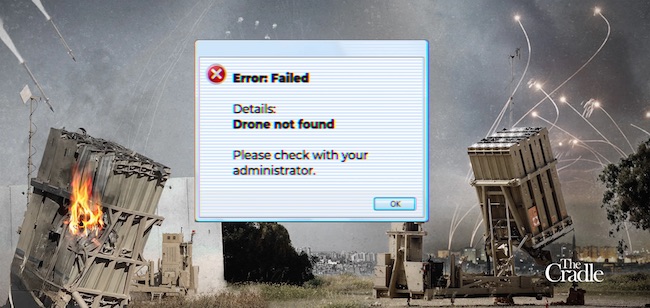“..its most prized defensive weapon is part of a broader branding effort, rooted in techniques pioneered by Edward Bernays..”
• Cracks in the Dome: Israel’s Security Mirage (Raiss)
The Iron Dome, touted as Israel’s most-effective defense shield, was designed to project an image of security and technological superiority. Promoted as a cutting-edge mobile air defense system, it was intended to symbolize an impenetrable barrier safeguarding the occupation state from external threats. However, the reality reveals a different picture: much like a child in a knight costume – impressive against plastic swords but utterly defenseless against real weapons – the Iron Dome excels mainly against the relatively crude weapons of the Palestinian resistance in Gaza. Israel’s carefully-crafted image of its most prized defensive weapon is part of a broader branding effort, rooted in techniques pioneered by Edward Bernays. The occupation state has positioned itself as a cosmopolitan, progressive, and democratic society – in stark contrast to neighboring West Asian states, which it portrays as violent and repressive.
The Iron Dome is not just a defense system but also a psychological construct designed to reinforce the image of an invulnerable entity under constant threat from less enlightened neighbors. Despite its reputation, the Iron Dome’s performance has often fallen short. Numerous videos have surfaced showing malfunctions – the Tamir missiles performing erratic maneuvers, exploding near civilian areas, or being triggered by false alarms and causing damage to infrastructure. These failures contrast starkly with Israel’s claims of a 90–99 percent interception rate. Professor Emeritus Theodore Postal of the Massachusetts Institute of Technology (MIT) offers a vastly different assessment. “I would say that the intercept rate is at best 4 or 5 percent,” Postal said in an interview with the Boston Globe last October. In a 2018 study published in the Journal of Global Security Studies, Michael Armstrong also questions the Iron Dome’s touted “90 to 99 percent” interception rate.
For starters, he clarifies that “the interception rate is the percentage of rockets destroyed before they hit defended areas; it ignores rockets over undefended areas.” In other words, the defense system is, from the onset, only targeting a small portion of the rockets fired. For example, Israeli officials claimed that of the approximately 1,000 projectiles fired into Israel by Hamas during November 2012’s Operation Pillar of Defense operation, Iron Dome identified two-thirds as “not posing a threat” and only intercepted 90 percent of the remaining 300 rockets. Armstrong points out further holes in the calculations of Iron Dome proponents:
The empirical analysis suggests that Iron Dome batteries intercepted less than 32 percent of all hazardous rockets during Pillar of Defense, but between 59 and 75 percent during Protective Edge … The calculations further suggest the number of rockets hitting populated areas during Pillar of Defense may have been understated. The number of threats to populated areas, on the other hand, may have been overstated. This implies that Iron Dome’s effective interception rate may have been significantly lower than reported.
The situation is particularly dire in northern occupied territories, where the town of Kiryat Shmona – a settlement once believed to be under the Iron Dome’s protection – has seen its population flee from rising threats. Thousands of residents have abandoned their homes, exposing the vulnerabilities the Iron Dome was supposed to eliminate. With Hezbollah expanding its rules of engagement, the number of displaced persons is likely to rise, further exposing the system’s inadequacies. As Israel desperately scrambles to expand its defense options, the new solutions prove equally flawed, leaving the population vulnerable beneath a defense system that no longer lives up to its myth. The once-vaunted shield is crumbling, and with it, the carefully constructed narrative of invincibility that has long underpinned Israel’s security strategy.
- Forums
- Breaking News
- israel
“..its most prized defensive weapon is part of a broader...
-
- There are more pages in this discussion • 287 more messages in this thread...
You’re viewing a single post only. To view the entire thread just sign in or Join Now (FREE)






